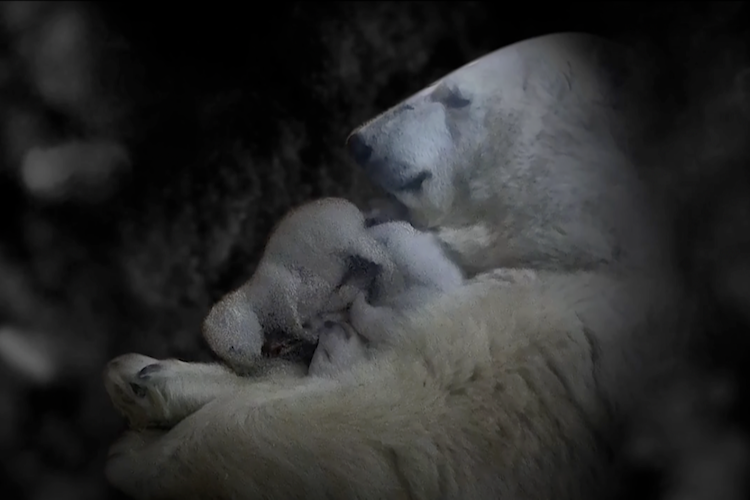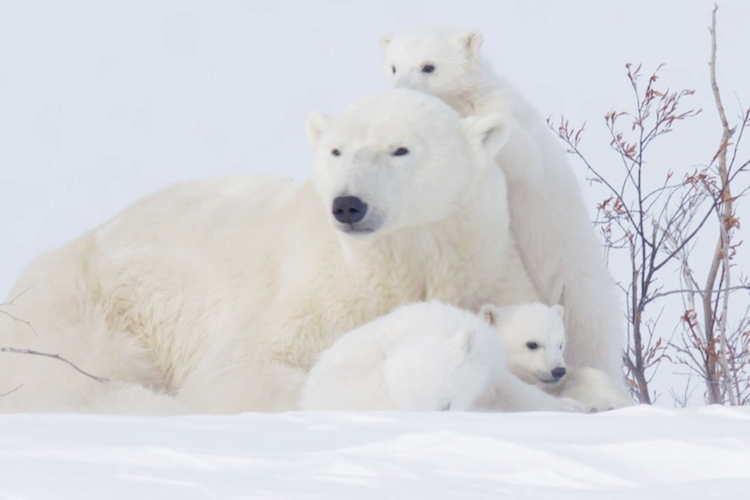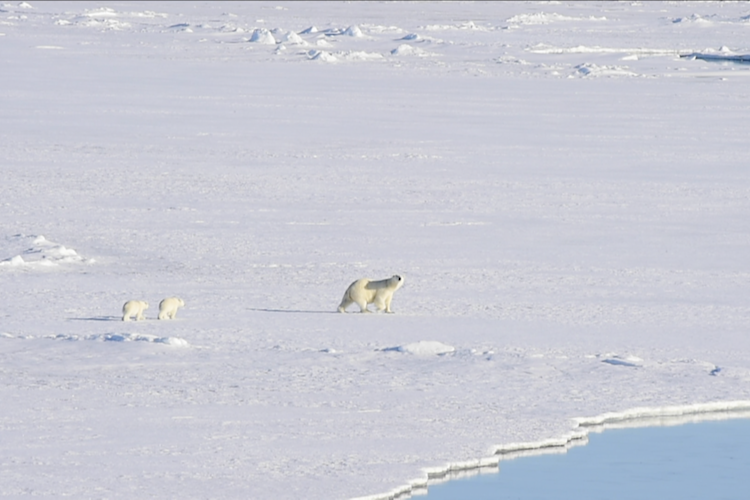Photo: Daniel J. Cox
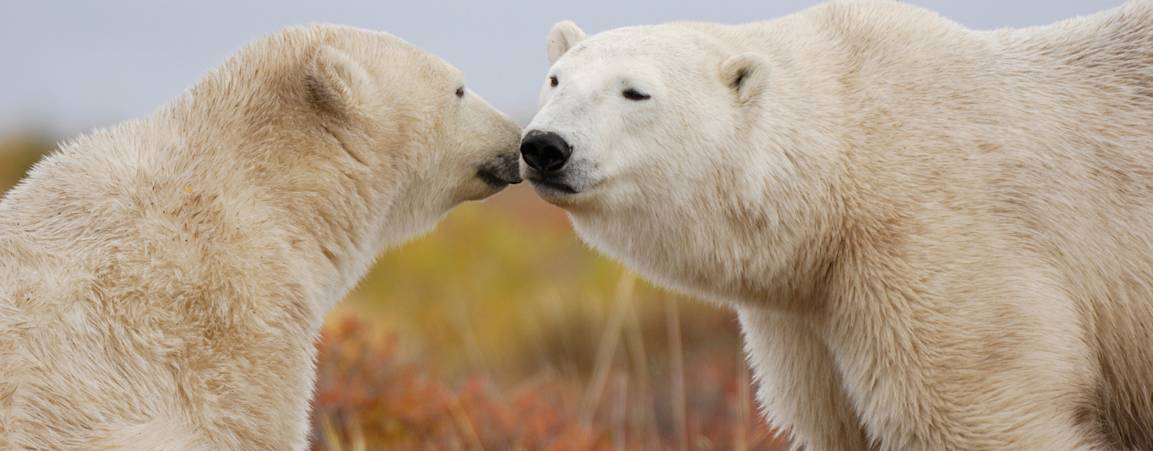
Life Cycle
For female polar bears, the cycle of life includes mating, denning, and giving birth to cubs.

Photo: Kieran Mulvaney
Mating (Spring)
Between April and late June, male polar bears search for female mates on the sea ice by following scented trails left by footpads.
Mating takes place on the sea ice. But the fertile eggs don’t implant until the fall, and only if the female has enough fat to sustain herself and her cubs during the long denning period. This process is called delayed implantation.
After mating, adult males remain with the female for a few days before taking off on their own.
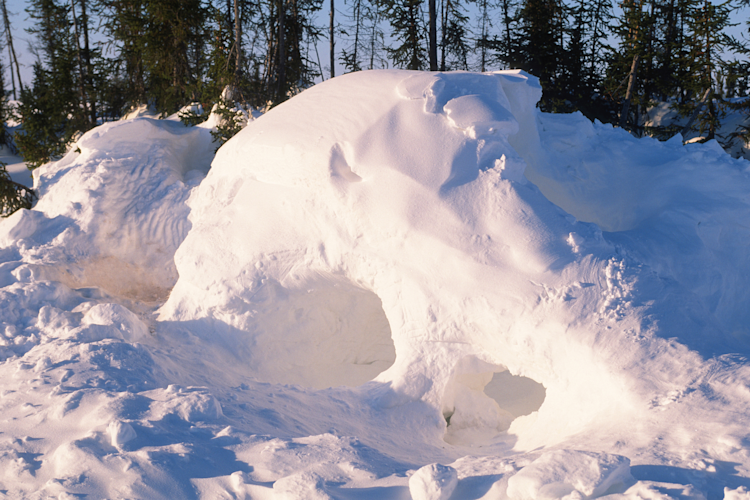
Photo: Daniel J. Cox
Denning Fall & Winter
After feeding through the summer and fall, gaining as much weight as possible, pregnant female polar bears prepare to enter maternity dens to give birth to their cubs. To build a den, the female digs a small snow cave in a snowdrift —just large enough for her to turn around. She then waits for the snow to close the entrance tunnel and completely hide the den under the snow.
Birthing (Winter)
Wild polar bear cubs are most often born in December. The mother gives birth to 1-3 cubs, with twins most common. The family remains in the den until spring. While in the den, the mother bear doesn’t eat or drink. She is devoted to nursing and caring for her cubs.
Photo: Daniel J. Cox
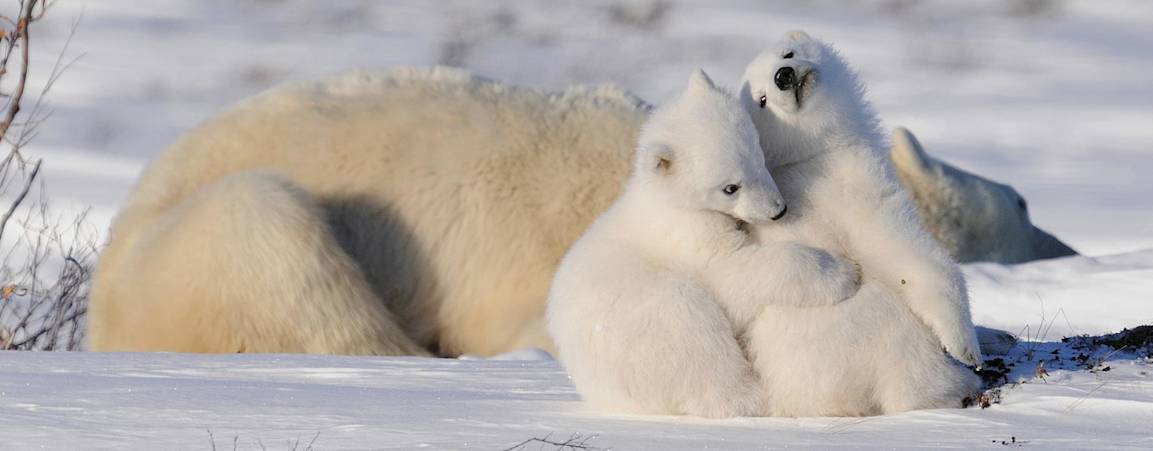
Polar Bear Cubs
Totally dependent on their mothers, newborn cubs are blind, toothless, and covered with soft white fur. They weigh little more than 1/2 kg (1 lb) and are just 30-35 cm long (12 to 14 in). The cubs grow rapidly on their mother's rich milk (31% fat) and continue nursing for at least 20 months.
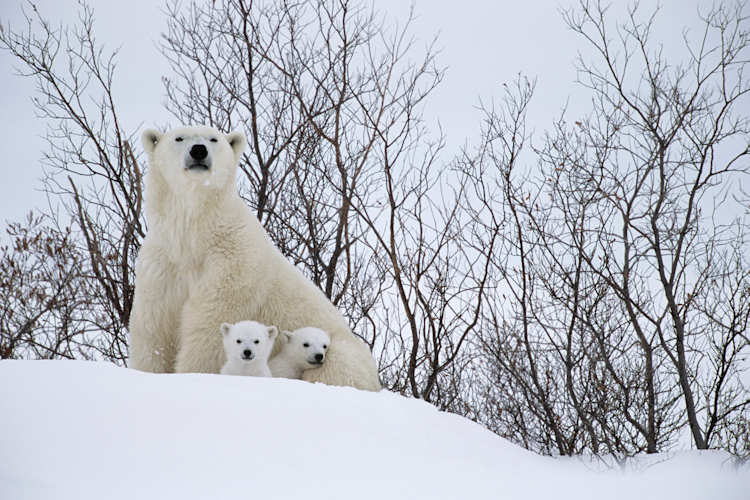
Photo: Daniel J. Cox
Emerging from then Den
Polar bear families generally emerge from their dens in March or April when the cubs are strong enough to survive in outside Arctic conditions and make the trek to sea ice.
Now, mother bears can start teaching their young how to hunt seals on the ice and survive in the Arctic.
Learn More About the First Few Months of a Polar Bear's Life


Growing Up
Polar bear cubs generally stay with their mothers for 2.5-3 years, learning how to hunt, feed, swim, and survive.
Between the time they leave their mother and are mature enough to mate, polar bears are called subadults.
Reaching Adulthood
Polar bears are considered adults when they are old enough to mate. For females, this is ages 4-6, for males 6-10.
By the time they reach adulthood, adult males normally weigh 350-600 kg (775-1,300 lb). Adult females usually weigh 150-295 kg (330-650 lb), though some can be larger.
Life Span
In the wild, polar bears live an average of 15 to 18 years, although biologists have tagged a few bears in their early 30s.
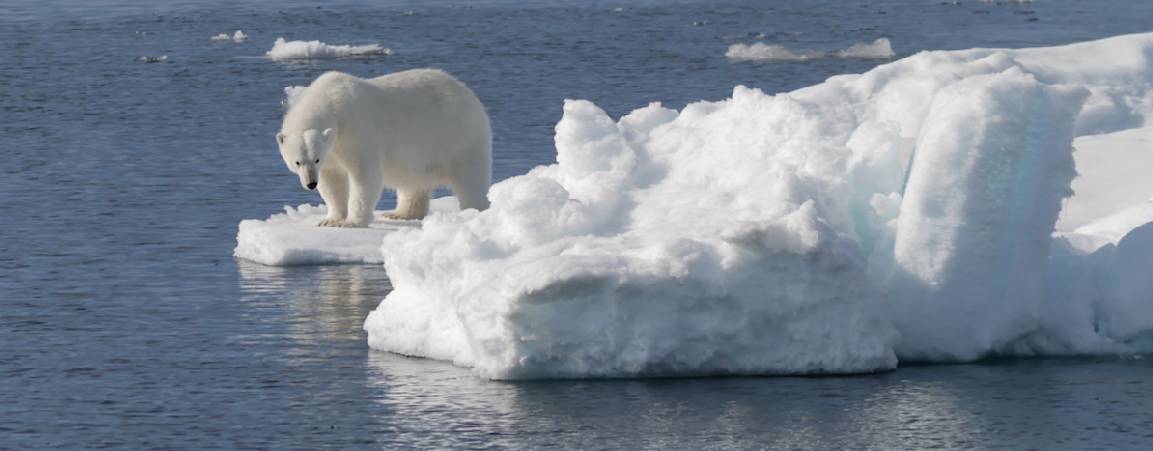
Feeling inspired?
Join us in our efforts to encourage leaders to make a swift transition away from fossil fuels and to renewable energy sources, by spreading awareness about the real and pressing threat of climate warming.
